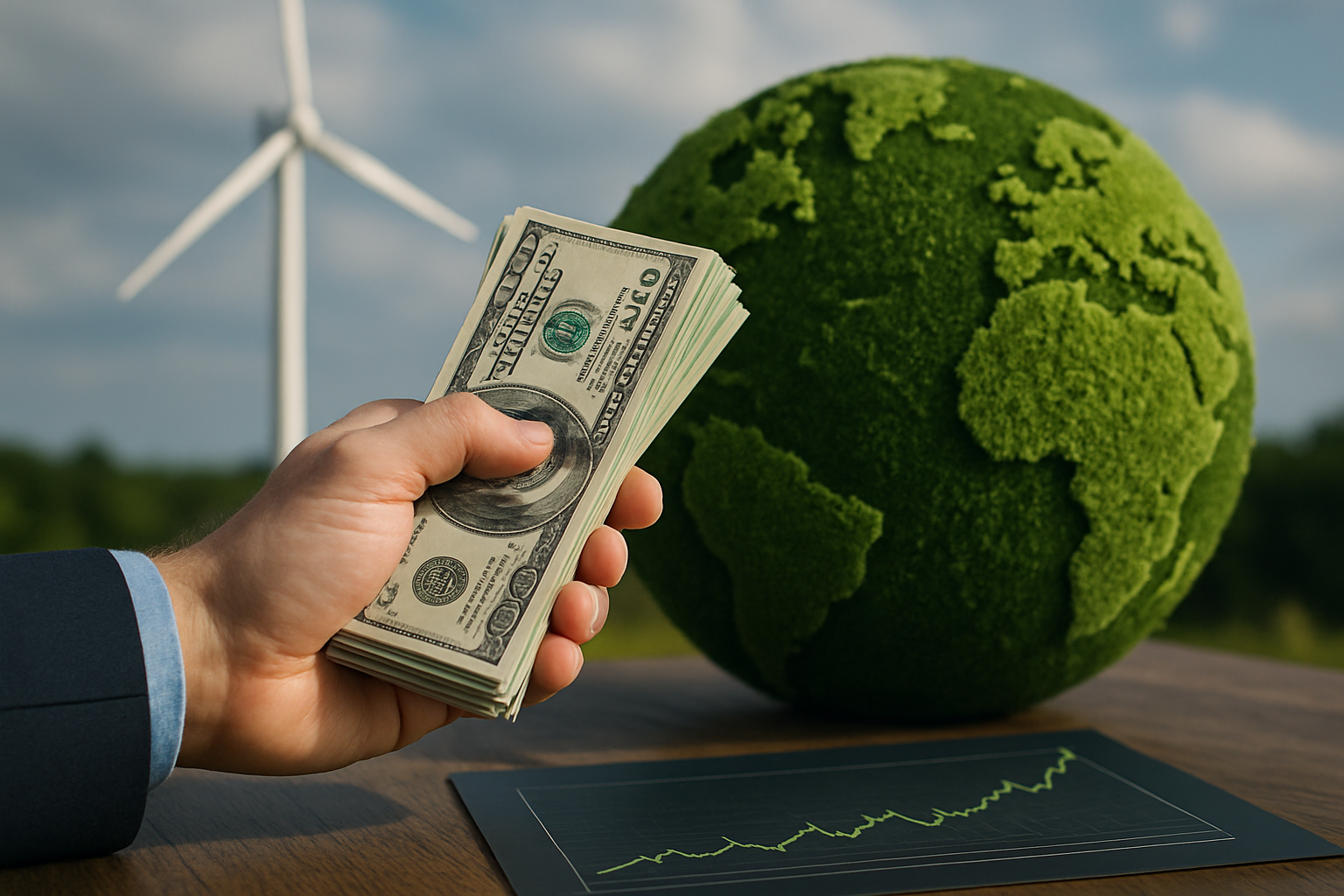The Circular Economy: A New Frontier in Financial Innovation
Imagine a world where waste becomes wealth, and economic growth doesn't come at the expense of our planet. This isn't a distant utopia, but a burgeoning reality known as the circular economy. As financial systems evolve to meet global challenges, this revolutionary model is reshaping investment strategies, creating new markets, and redefining what it means to generate sustainable returns.

Understanding the Circular Economy
At its core, the circular economy is about moving away from the traditional linear model of take-make-dispose. Instead, it promotes a system where resources are used, recovered, and regenerated in a continuous loop. This concept isn’t just about recycling; it encompasses everything from product design and manufacturing processes to new business models and consumer behaviors.
The financial implications of this shift are profound. Companies that embrace circular principles often see improved resource productivity, reduced costs, and new revenue streams from previously discarded materials. For investors, this translates to potential long-term value creation and resilience in a resource-constrained world.
The Financial Ecosystem of Circularity
As the circular economy gains momentum, a new financial ecosystem is emerging to support it. This includes specialized investment funds, green bonds, and innovative financing mechanisms designed to catalyze circular business models.
One notable development is the rise of circular economy funds. These investment vehicles focus on companies that are leading the transition to circularity, whether through innovative product design, closed-loop supply chains, or resource recovery technologies. Major asset managers are launching such funds, signaling growing investor interest in this space.
Another key area is circular financing. This involves tailored financial products that enable circular business models. For example, product-as-a-service arrangements, where customers pay for the use of a product rather than owning it outright, require different financing structures than traditional sales models. Financial institutions are developing new offerings to meet these needs, creating opportunities for both lenders and borrowers.
Measuring Circular Value
One of the challenges in circular economy investing is measuring and valuing circularity. Traditional financial metrics often fail to capture the full benefits of circular business models, which can include reduced material costs, increased customer loyalty, and enhanced brand value.
To address this, new valuation methodologies and metrics are being developed. These aim to quantify aspects like resource productivity, waste reduction, and product longevity. For investors, understanding these metrics is crucial for identifying circular economy leaders and assessing their long-term potential.
Some companies are even exploring the concept of circular accounting, which seeks to internalize environmental and social costs typically treated as externalities. This approach could dramatically alter how we assess corporate performance and make investment decisions.
Circular Economy and Risk Management
The transition to a circular economy also has significant implications for risk management. As resource scarcity and environmental regulations become more pressing issues, companies with circular business models may be better positioned to navigate these challenges.
For financial institutions, this means reassessing risk profiles across their portfolios. Companies heavily reliant on virgin materials or linear production models may face increased risks in the future. Conversely, those embracing circularity could offer more resilient investment opportunities.
Climate-related financial risks are particularly relevant here. As governments and regulators increasingly focus on climate change, circular economy principles offer a pathway to reduce emissions and enhance resource efficiency. This alignment could make circular businesses more attractive from a risk perspective.
The Role of Policy and Regulation
The growth of circular economy finance is closely tied to policy and regulatory developments. Governments around the world are implementing measures to promote circularity, from extended producer responsibility laws to tax incentives for recycled materials.
These policy shifts create both opportunities and challenges for investors. On one hand, they can drive demand for circular products and services, potentially boosting returns for companies in this space. On the other, they may pose risks for businesses that are slow to adapt to new circular requirements.
Understanding the policy landscape is crucial for investors looking to capitalize on the circular economy trend. This includes staying informed about upcoming regulations, assessing their potential impact on different sectors, and identifying companies well-positioned to benefit from these changes.
Actionable Insights for Circular Economy Investing
-
Look for companies with strong circular credentials, such as those implementing closed-loop production systems or offering product-as-a-service models
-
Consider the potential of circular economy funds as a way to gain diversified exposure to this trend
-
Pay attention to new metrics and valuation methodologies that capture circular value
-
Assess the circular transition risks in your current portfolio, particularly for companies in resource-intensive sectors
-
Stay informed about circular economy policies and regulations in key markets
-
Explore opportunities in circular financing, such as leasing arrangements or performance-based contracts
-
Consider the potential of the circular economy to address climate-related financial risks in your investment strategy
As we navigate the complexities of 21st-century finance, the circular economy emerges as a beacon of innovation and sustainability. It offers a vision of economic growth that doesn’t compromise our planet’s future, and with it, a wealth of new financial opportunities. For investors willing to embrace this paradigm shift, the circular economy represents not just a chance to generate returns, but to be part of a transformative movement reshaping our economic landscape. The financial frontier of circularity is wide open, inviting exploration and promising rewards for those bold enough to venture into this new territory.





